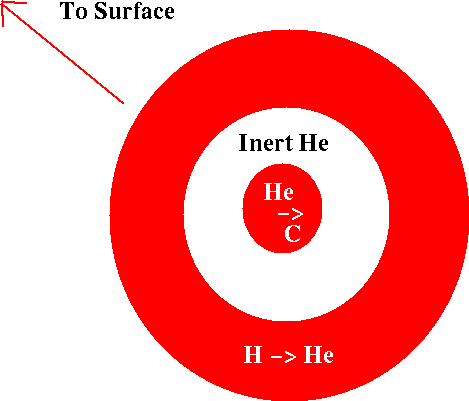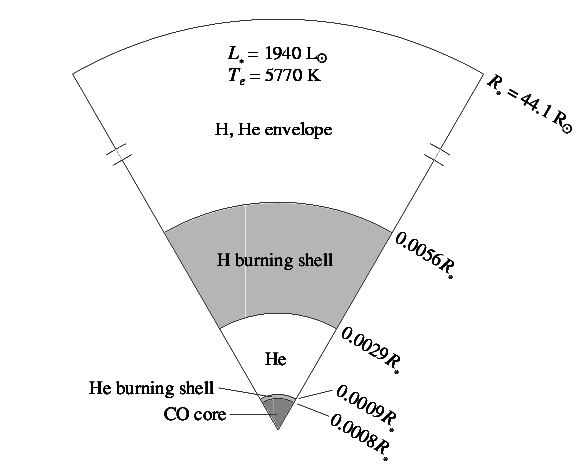Asymptotic Giant Branch Stars
So we left the star on the horizontal
branch, with
-
a helium burning core
-
a hydrogen burning shell
Looks like this:

What happens when the center runs out of helium?
A very similar evolution to what happened when it runs
out of hydrogen!
-
The "carbon/oxygen ash" core begins to build up. In
a low mass star (M<8 Msun), carbon burning cannot occur
- T and rho are too low. Since the carbon core can't produce energy to
heat up and balance the weight of the star, the
core contracts and heats.
-
As the C/O core contracts, heating the layers immediately
outside, helium shell burning commences. This provides so much energy that
the star begins to expand again.
-
More energy, high opacity means that convection again becomes
important. A second dredge-up phase ensues.
-
Expanding photosphere, high luminosity --> the star becomes
an asymptotic giant branch (AGB) star,
aka a red supergiant:

The End of the AGB phase
AGB stars undergo periodic instabilities
-
Helium Shell flashes
The inert helium shell is continually having mass added
to it from the hydrogen shell. It exists in a partially degenerate state,
and when the mass gets too high, it can ignite in a flash similar to the
first helium flash (on the red giant phase). This causes the star to drop
in luminosity and contract in size (why?). This cycle repeats
on ~ 105 yr timescales.
-
Long Period Variable Stars (LPVs)
Instabilities in the outer envelope cause AGB stars to
pulsate on periods of several hundred days.
In a not-well-understood fashion, these processes may conspire
to drive the strong mass loss observed
in many AGB stars:

The outer layers of the AGB star are very extended (several
AU), and are not very strongly bound to the star. The mass loss, pulsations,
and low binding energy of the outer layers can drive them off of the star,
turning into....
A Planetary Nebula



